Other Names: Kelpie, Barb
Country Of Origin: Australia
Dog Group: Herding dog
Size: Medium
Recommended For: Families, couples, single owners
Maintenance Level: Moderate/low
Lifespan: 12-15 years
Temperament: Intelligent, energetic, independent
FAQ:

Suitable For First-Time Owner: No
Good With Children: Yes
Good With Other Animals: Yes
Good With Strangers: No
Suitable For Apartments: No
Exercise Requirements: Daily walking
Can Live In Hot Weather: Yes
Can Live In Cold Weather: Yes
Can Tolerate Being Left Alone: Yes
Grooming: Low
Trainability: Easy/moderate
Breed Overview:

The Australian Kelpie is a medium-sized breed used as a working dog to herd sheep.
The breed is known for its intelligence and can herd sheep with little to no guidance or instruction from its owner.
The breed is used worldwide for its excellent herding skills.
Although they’re kept primarily as working dogs, the Kelpie makes a good family pet. They’re also popular as show dogs and often do well in agility trials.
Color: Black, red, chocolate, fawn, blue, cream, or any combination of these colors with tan
Height: 15-20 inches
Weight: 31-44lbs
Personality and Temperament:
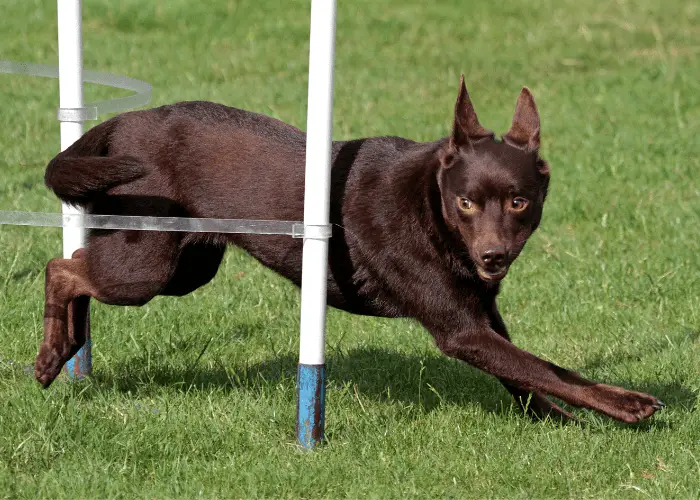
The Kelpie is an intelligent breed and very friendly towards humans.
They are known to be very independent and were bred to be able to do their job with very little instruction.
While this is a massive help when used in a working environment, it can result in the breed being a bit stubborn when kept as a pet.
However, if the dog is trained correctly from a young age, the chances of this developing into a problem should be minimal.
When it comes to training, the Australian Kelpie is a relatively easy breed to train.
This is again from their use as working dogs because they needed to be able to pick up commands quickly.
The breed responds well to obedience training and will master basic commands quickly.
They can also pick up very complicated commands, which is why they do so well in agility competitions. As with any breed, you should start training as early as possible.

The Australian Kelpie is a good family pet and is very friendly towards every family member.
The Kelpie is also good with children and loves to play. Although they’re OK around young children, owners should be wary of the dog getting too energetic because although they’re not a massive breed, they could easily knock a child over if they’re playing too hard.
While the Australian Kelpie is a great family pet, the breed is unsuitable for apartment living. They’re far too energetic to be kept in a small space and ideally should be kept in a house with plenty of lands.
Their instinct is to roam, but they’re also good at coming home. However, it’s recommended to keep your land well fenced in and to microchip all dogs to be on the safe side.
Kelpies need plenty of exercise and should be walked daily for at least 30 minutes, but an hour or more is better.
Because of their role as sheepdogs, they were bred to run for hours in the Australian sun, so they’ll be able to take as much exercise as you can give them.
Walking should be supplemented with playtime at home, and you should do everything possible to provide them with plenty of mental stimulation.
The breed is excellent with other animals, and owners should find little problem around dogs or other pets.
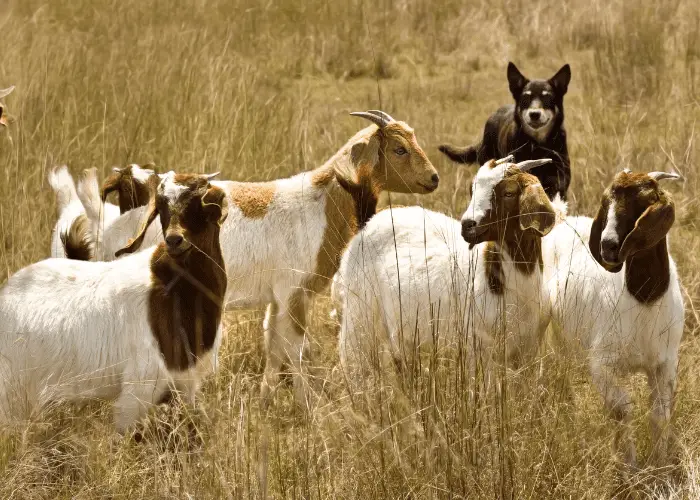
You only need to be wary of the dog’s natural herding instinct kicking in, particularly around other dogs.
While this won’t be a massive problem, some dogs might not enjoy being herded. By its nature, the breed isn’t aggressive, but owners should try and socialize with other animals from an early age to ensure there are no problems later down the line.
The Australian Kelpie doesn’t necessarily have any natural guarding instinct but will be protective of what it considers its property.
For this reason, you might find the dog being wary of strangers that come to the home, but there should be a little problem when owners are around. The breed isn’t known to bark much, but this will change if they feel threatened.
Kelpies were bred for use in an Australian climate and can tolerate very hot weather.
They’re also OK to be kept in cold climates, but you should probably get them a coat if winters are freezing.
You won’t be restricted walking them in high temperatures, but be conscious of cold ones, as this isn’t what the breed was designed for.
Due to their energy levels and independent nature, the Australian Kelpie isn’t suitable for first-time owners.
They’re much better suited to owners with experience looking after dogs, as they will generally feel more comfortable being authoritative enough to keep the breed in line.
Kelpies can be left on their own for extended periods, and it’ll make little difference to the dog, whether on their own or with other dogs.
Grooming:

Overall, the Australian Kelpie is relatively low maintenance regarding grooming. They have a short, double-layered coat, naturally straight and flat-lying.
It would help if you aimed to brush them weekly to help remove loose hairs and distribute oils. Their coat is designed to repel rain, so brushing the natural oils through it will help with this.
Kelpies shed quite a lot, which isn’t affected by seasonal changes. So, if you’re looking for a hypoallergenic breed, the Kelpie isn’t for you.
Regular brushing will help, but you shouldn’t bathe them too frequently. This is because the natural oils in their coat repel water, so bathing them too often will strip the oil out.
As with any other breed, regular tooth brushing is crucial, and you should aim to brush their teeth several times a week.
The same is true for nail clipping, although the more exercise they get, the less likely you’ll need to clip their nails. Walking wears them down naturally, and a Kelpie is unlikely to stay still long enough to have their nails trimmed anyway.
Common Diseases and Conditions:
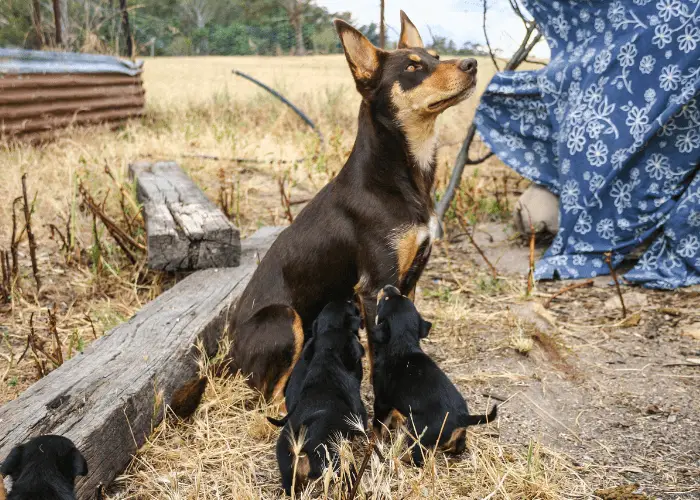
The Australian Kelpie is generally a very healthy breed and suffers from very few hereditary conditions.
This is due mainly to the variety of breeding stock, as Kelpies haven’t been selectively bred all that much.
There are known cases of common conditions such as hip dysplasia and luxating patella, but responsible breeders test these.
One known condition in the breed is cerebellar abiotrophy, a degenerative neurological condition affecting the dog’s sense of space and distance.
This leads to a loss of coordination and increases the risk of falls. Onset usually occurs at an early age and is noticeable through an increase in clumsiness, which is noticeable in such an agile breed. The only way to test for the condition is using DNA analysis, and it’s currently incurable.
History:
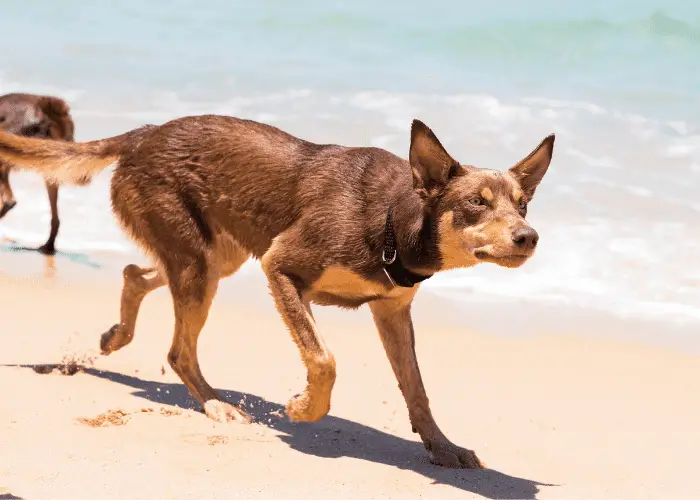
The Australian Kelpie can trace its lineage to the first herding dogs brought to Australia in the late 19th and early 20th centuries.
These were broadly collies of different kinds, bred with other dogs to create suitable working dogs.
At some point around this time, dingoes were brought in for their speed and stamina. The Australian Kelpie has around 3-4% dingo DNA.
The first dog recognized as a Kelpie was bought in 1872 and was a black and tan female.
By this point, the dingo had been integrated into the dingo bloodline, and they were successful herding dogs ideally designed for the Australian outback.
The first breed standard for the Kelpie was published in 1904, and since then, the breed has been exported worldwide for its use as a herding dog.
The breed is recognized by many kennel clubs and is regularly shown in both agility and show competitions.
Australian Kelpie Facts & Figures:
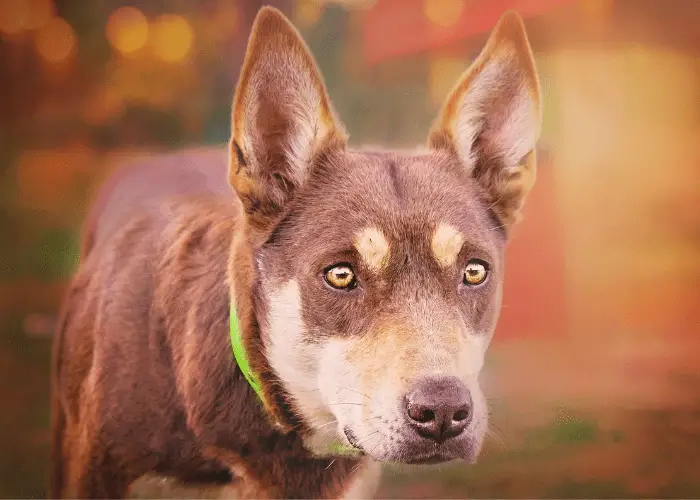
Did You Know?
- The Australian Kelpie is named after the Kelpie, a figure from Celtic folklore. This is a reference to its British heritage, and some believe the Kelpie of folklore was sired by a dingo, although this doesn’t make sense because there are no dingoes native to Britain.
- Since the 1990s, Kelpies have been used as scent dogs and are particularly popular in Sweden, where they’re used as search and rescue dogs.
- One of the most famous names for a Kelpie is Red Cloud. The first was owned by John Quinn and started the tradition of referring to tan Kelpies as red.
- The breed is capable of herding and can often do most (or all) of the job without any instruction from its owner.
- The nickname “Barb” is almost specifically used for black Kelpies. This is because the first black Kelpie, created by crossing the breed with a Smooth Collie, was called The Barb. It was named after a successful racing horse, just stuck.

